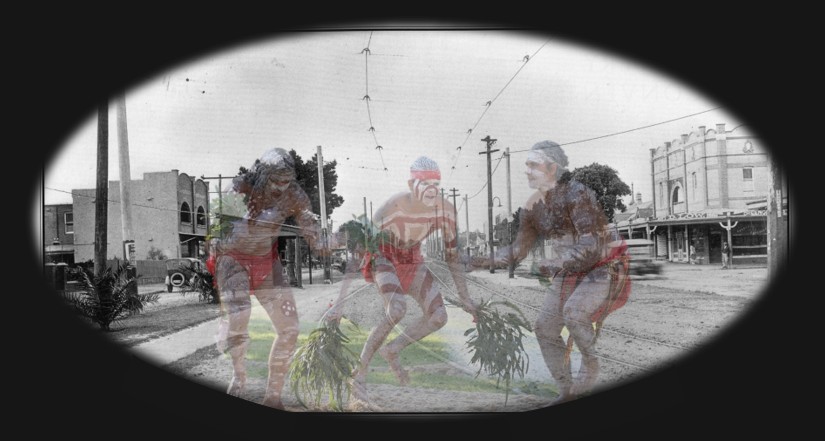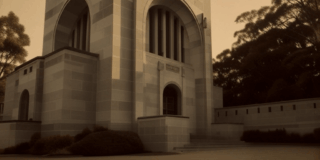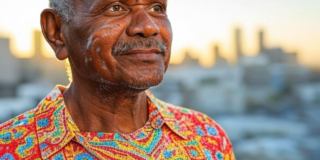
Along Anzac Parade, the wheels sing over memory,
a rubber hymn across old bones –
layers beneath tarmac, each breath of engine
stirs up dust that is not just dust but story:
this ground records everything that’s passed,
the bones of old eel, the drop of whale eye salt,
the print of bare foot, marching boot, and steel-rimmed wheel.
Here is the avenue where now traffic shuttles
between university and beach,
laughter in the stadium, bus bells and sirens –
but listen, hush, beneath the bitumen’s sheen:
the land whispers back, surging in silent opinion,
retelling itself, naming every shadow
by kin and by totem, by promise and by pain.
Long before the marchers with slouch hats –
before khaki, before red-dust drills –
Gadigal feet pressed these grains,
low in the hollows where banksia drank rain,
each step a syllable along the ancient sentences,
turning ochre with learning, marking ritual with smoke.
The white-spiral shell at Maroubra, the fire stick at La Perouse:
they carry a timeline no clock could round.
To them, Anzac Parade is another kind of dreaming,
a seam in the Country that never closes,
a track the ancestors opened when the world was a soft shell,
the Rainbow Serpent’s dragline glimmering just below perception.
The land remembers: not as books remember, not as monuments,
but as skin remembers scar, as tree remembers axe,
as salt remembers blood.
Here, the world’s muscle flexed for the first breath,
a shudder at the margin of water and land –
where gilled shadow risked the air,
the wash of tides urging it from marine silence
onto the mingled promise of sand and silt.
There was a time everything was serpent, was waves –
then change came slithering up, gasping, limbed,
drawn inland by the oldest invitation.
Legs, then feet, then the insistence of walking,
songlines carved with footsteps, stories nested in glances,
every stick and shell, every stone lifted and replaced,
the Country recording with infinite patience
each slight disturbance and every intent.
And so it continues – convoys and coaches,
flags, parades, pedal and engine,
each leaving an imprint,
however faint:
a soldier’s last look at the Norfolk pines;
a child’s sandy footprints
running home from the roar of surf;
a march called for memory, two-up coins down at dawn.
If you stop in the lull and lay your ear to the old earth
where Anzac Parade pulses in its concrete skin,
you’ll hear strata upon strata –
not silence, but woven voices,
some song-loud and others sighing.
Because the land, she carries it all:
the life dragged from water, the dreaming that walks,
the grief in bootprints, and the hope in newborn yell;
the long march forward and the longing behind.
Every stone and every breeze is an archive –
not dead but breathing,
not gone but folding the now into all that came before.
The road reminds you, with every step,
the ground remembers,
the ground forgives,
the ground keeps score –
and in that ledger, written in dust and pollen and salt,
are all our stories,
alive as the wind that sings, invisible but real,
along Anzac Parade.


